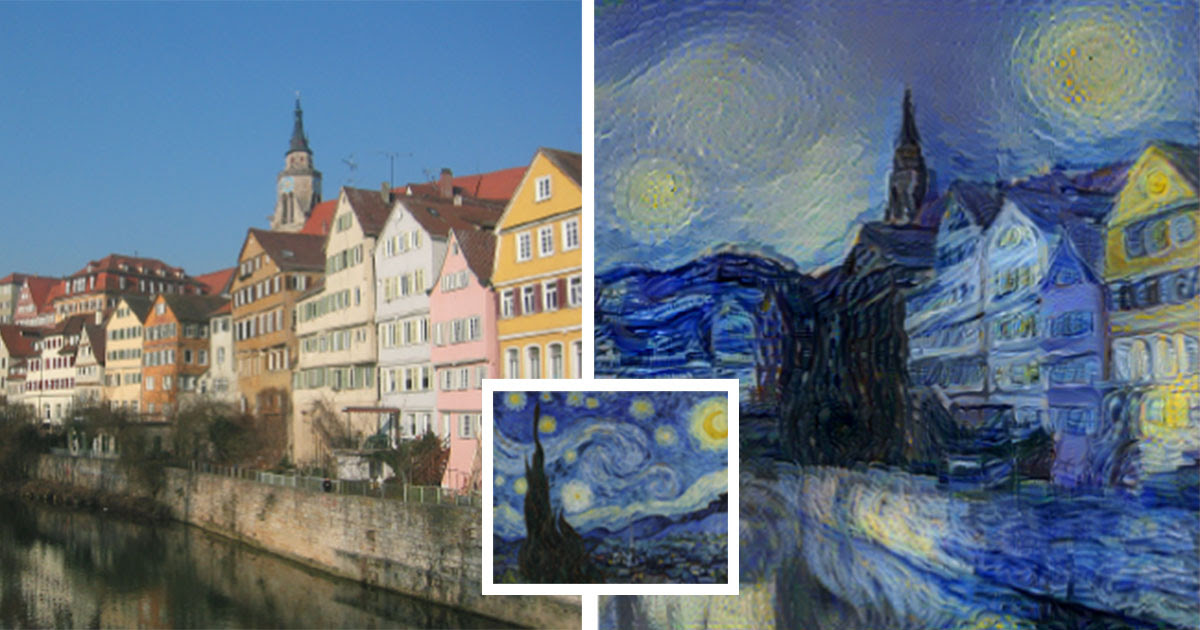If science is a man's empirical analysis of himself and his surroundings, then astronomy and neuroscience are the two poles of this scientific spectrum; while both contain huge amounts of unknowns, both inspire phenomenal creativity. Neuroscience creates an interesting convergence with art, as both fuels the creation of art, as well as the interpretation of art.
 |
| painting combines astronomy and neuroscience |
In Professor Vesna's lectures, she discussed the past and modern philosophical and psychological interpretations of the brain. Some scholars consider our brain in a functional manner - composed of neurons and synapses, while some, such as Descartes, Freud, and Jung, seeks to explain the subconscious in an abstract manner - analysing our emotional, instead of chemical, responses.
 |
| Carl Jung and Sigmund Freud |
The modern intersection of neuroscience and art is interesting, and has moved beyond the biological sense. Artificial neural networks composed of algorithms, which were initially modeled after the consciousness of rats, are now being used to learn simple tasks such as image recognition and data processing. Just as our brains are capable of creating of perceiving art, artificially created neural networks have also been proved to be capable of recognizing certain patterns and replicating them. An example is the neural network that modifies an image in the styles of famous painters:
 |
| Neural Networks allow paintings to be generated in a certain artistic style |
|
The combination of neuroscience and art allows artists to step outside of their dependency on the unconscious and instead make it the subject of their creativity. This validates C.P. Snow's idea of two cultures and the close-knit relationships between science and art.
Media:
Xavier Seguin. Jung vs Freud. Digital image. Eden Saga. N.p., n.d. Web.
Banks, Michele. "New Painting Combines Astronomy and Neuroscience #sciart Https://t.co/wgi1WqHcvo Pic.twitter.com/GbRfYfp9bK." Twitter. Twitter, 25 Feb. 2016. Web. 18 July 2016.
Karpathy, Andrey. "The Unreasonable Effectiveness of Recurrent Neural Networks." The Unreasonable Effectiveness of Recurrent Neural Networks. N.p., n.d. Web. 18 July 2016.
Sources:
Bird, Steven., E. Klein, E. Loper. "Natural Language Processing with Python." NLTK Book. n.d. Web. 27 June 2016.
Karpathy, Andrey. "The Unreasonable Effectiveness of Recurrent Neural Networks." The Unreasonable Effectiveness of Recurrent Neural Networks. N.p., n.d. Web. 18 July 2016.
"The Global Consciousness Project." Global Consciousness Project: Introduction. N.p., n.d. Web. 18 July 2016.
Seguin, Xavier. "Jung vs Freud - Eden Saga - English." Eden Saga English. N.p., 17 Feb. 2015. Web. 18 July 2016.
MailOnline, Victoria Woollaston for. "A Beautiful Mind: Japanese-style Art Inspired by Neuroscience Reveals Grey Matter in Much More Colourful Glory." Mail Online. Associated Newspapers, 15 Dec. 2014. Web. 18 July 2016.


No comments:
Post a Comment